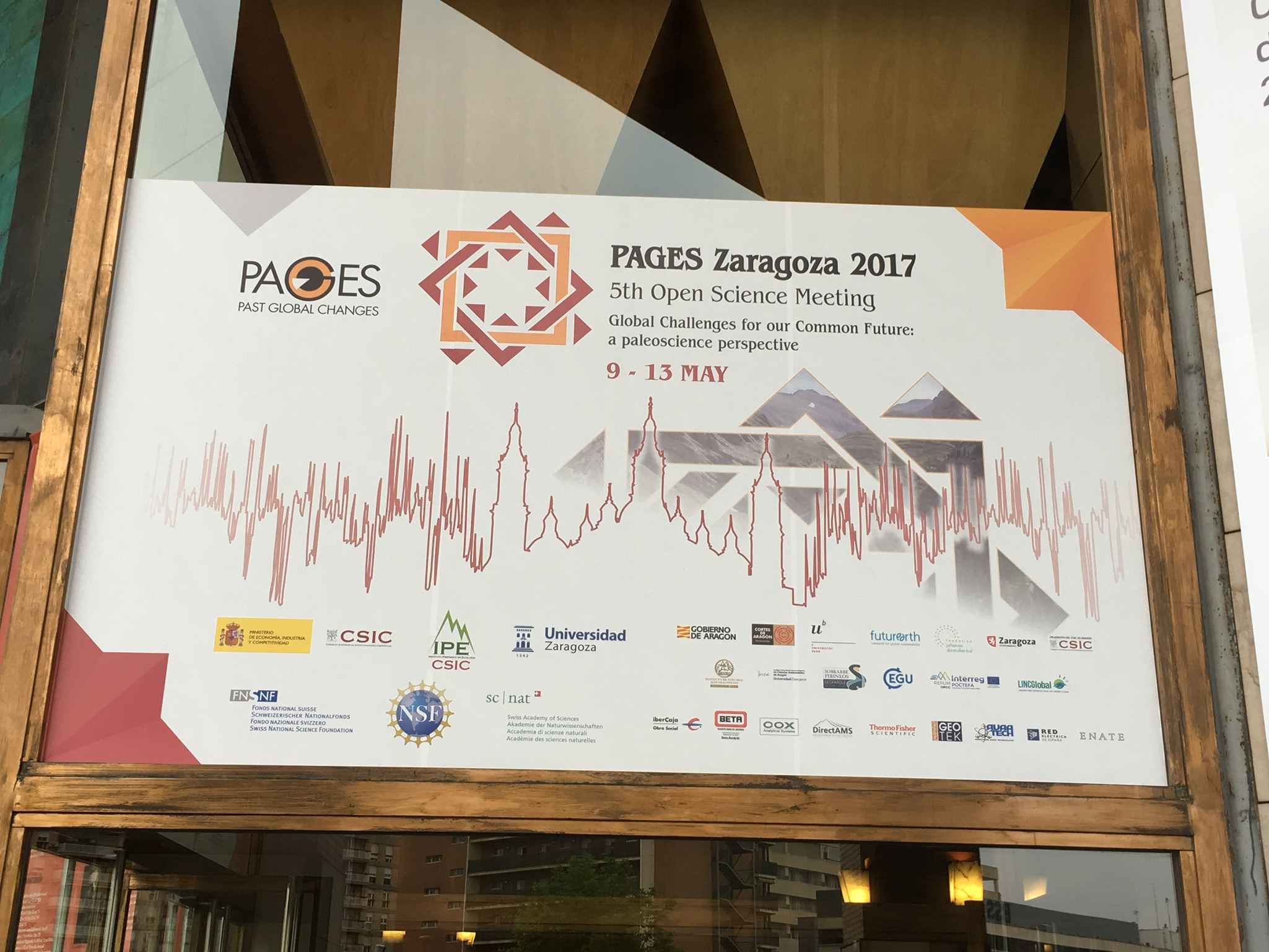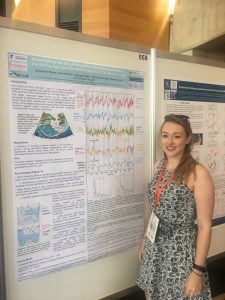
May 24, 2017, by lzzeb
The Past Global Changes Open Science Meeting, Zaragoza
A blog by PhD student Savannah Worne
“The PAGES (Past Global Changes) project is an international effort to coordinate and promote past global change research. The primary objective is to improve our understanding of past changes in the Earth system in order to improve projections of future climate and environment, and inform strategies for sustainability.” (www.pages-osm.org, Accessed May 2017).
In May 2017, several members from the Centre for Environmental Geochemistry (BGS/University of Nottingham) travelled to Zaragoza, Spain, to give talks and present posters at the PAGES 5th Open Science Meeting (OSM), including myself, Professor Sarah Metcalfe, Dr George Swann, Dr Matt Jones, fellow PhD student Nick Primmer and Dr Stefan Engels. Over 800 scientists from 51 countries also participated, where over the course of the four-day conference there were 9 plenary talks, 344 additional talks and 649 poster presentations across 30 different themes covering a broad range of topics including Quaternary climate change, Ancient DNA, Volcanic eruptions and Data Stewardship, to name a few.
My personal motivation for attending the PAGES OSM was to share new results from my PhD research, which I have been producing over the last year with my supervisors Dr Sev Kender and Dr George Swann, as well as Prof Melanie Leng from the British Geological Survey and Prof Christina Ravelo from the University of California Santa Cruz. This was the perfect opportunity to present my new results as part of the Mid Pleistocene Transition session. For further information about the Mid Pleistocene transition and my PhD research, please see: http://britgeopeople.blogspot.co.uk/2016/01/a-new-phd-researching-effects-of.html.
We know that in the modern day the Bering Sea is a source region of CO2 to the atmosphere, as warm, nutrient rich water from the deep Pacific meets the continental shelf and upwells to the surface, releasing CO2 to the atmosphere. However it is hypothesised, that during cold glacial periods since the MPT, upwelling of Pacific Deep Water (PDW) was prevented by stratification of the water column from either increased sea ice or formation of cold intermediate waters, or a combination of the two. Reduction of upwelling PDW may mean that the Bering Sea was a net sink of CO2to the atmosphere in these severe glacial periods.

Savannah presenting preliminary PhD research on bulk sedimentary nitrogen isotope results from the Bering Sea, over the Mid Pleistocene Transition
To investigate this I used the nitrogen isotope (δ15N) record, which can be used as a record of nutrient utilisation. This is because the light isotope 14N is preferentially taken up by phytoplankton as they grow. So as more of the nutrient supply is used, phytoplankton begin to utilise the 15N as well. Therefore when we look at our sediment record, the ratio of 14N to 15N (δ15N) can tell us how much of the nutrient supply was used at the time the phytoplankton were deposited on the ocean floor.
The preliminary results which I presented at PAGES suggested that during severe post-MPT glacials, a more stratified water column caused high nutrient utilisation despite low phytoplankton productivity. A simultaneous increases in North Pacific Intermediate Water (NPIW) was also found at another nearby site in the Bering Sea (Knudson and Ravelo, 2015). We also found that there were larger variations in post-MPT stratification (0 – 590,000 years ago) than before, concurrent with glacial lengthening. The conclusion was therefore that there was an increase in water column stratification during post-MPT glacials, probably linked to the closure of the shallow Bering Strait (~50m) following sea level drop, and due to the formation of North Pacific Intermediate Water in the Bering Sea. I will now look to continue my research in reconstructing how sea ice evolved during this time, to assess its role in changing productivity, nutrient utilisation and PDW upwelling.
Overall, attending the PAGES OSM was highly rewarding, as I got to discuss my first sets of results with a large range of scientists both in my specific field and those with a wider appreciation for palaeoceanography. I am now more enthused than ever to continue my PhD research continue and answer unsolved questions about MPT palaeoceanographic change.
No comments yet, fill out a comment to be the first

Leave a Reply